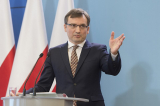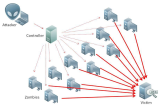
How did the Commission assess Slovenia's recovery and resilience plan?
The Commission is assessing the recovery and resilience plans based on eleven criteria set out in the Regulation itself. The 11 criteria require an assessment of whether:
- the measures have a lasting impact;
- the measures address the challenges identified in the country specific recommendations or a significant subset of it;
- the milestones and targets which allow for monitoring the progress with the reforms and investments are clear and realistic;
- the plans meet the 37% climate expenditure target and the 20% digital expenditure target;
- the plans respect the do no significant harm principle;
- the plans provide an adequate control and audit mechanism and set out the plausibility of the costing information.
The Commission has summarised its assessment in the proposal for the Council Implementing Decision. The accompanying staff-working document provides detailed documentation on the assessment.
Does Slovenia's recovery and resilience plan effectively support the green transition?
The Slovenian plan's contribution to the green transition amounts to 42% of its total allocation of €2.5 billion. This exceeds the minimum of 37% required by the RRF Regulation.
The plan includes reforms related to renewable energy and sustainable mobility to support the decarbonisation of the energy and transport sectors. The largest contributions to the climate targets are provided by measures for adaptation to climate change – for instance in the area of flood prevention –, by measures to promote renewables and energy efficiency of public buildings and upgrading of rail infrastructure. Some measures also enhance biodiversity, for example through better forest management or by promoting nature-based solutions for climate change adaptation.
Does Slovenia's recovery and resilience plan of Slovenia effectively contribute to the digital transition?
The Slovenian plan's contribution to the digital transition amounts to 21% of its total allocation of €2.5 billion. This exceeds the minimum of 20% required by the RRF Regulation.
The plan includes key reforms on cybersecurity and electronic identification to enhance use of public e-services and digitalisation of companies. Investments in broadband connectivity, cloud capacities and digital skills will help reduce the digital divide. Key areas of the public sector – including justice, health, education, and culture – will be digitalised. A dedicated programme will support the digitalisation of consortia bringing together SMEs and large companies. Slovenia also intends to participate in four multi-country projects (on cloud infrastructure, microelectronics, quantum communication and blockchain).
Digital aspects are included in several other measures in the plan. This reflects Slovenia's objective to support the digital transition and to address its related challenges, with a broad, cross-cutting approach: strengthening of digital skills at all levels of the education system, life-long learning and trainings for the employees, e-health, R&D projects to support digital transition of companies, digital tools to support sustainable tourism, etc.
Does the recovery and resilience plan represent a balanced response to Slovenia's economic and social situation?
The plan represents a balanced response to Slovenia's economic and social situation. It includes significant measures to address social vulnerabilities, which also have an important territorial dimension, such as strengthening healthcare, establishing a system of long-term care, and providing access to affordable housing for people in need. These measures address a number of principles of the European Pillar of Social Rights.
Important measures target youth, such as measures to increase digital and green skills as part of the revamped curricula, to modernise education infrastructure, to have more education content digital, and to better link the education system with labour market needs. The plan will also address the current shortages of staff in healthcare, social services and preschool education by modernising the study programmes and including more professional training support.
Do the reforms presented by Slovenia effectively address a significant part of the country-specific recommendations issued to it in the context of the European Semester?
The Commission considers that the Slovenian plan includes an extensive set of mutually reinforcing reforms and investments that contributes to effectively addressing all or a significant subset of the economic and social challenges outlined in the country-specific recommendations addressed to Slovenia by the Council in the European Semester in 2019 and in 2020.
The plan includes key structural reforms in the areas of pensions, healthcare and long-term care. The pension reform aims at increasing the labour market participation of older people while ensuring the adequacy and long-term sustainability of the pensions. The healthcare reform is expected to maintain a broad basket of rights under the compulsory health insurance scheme, ensure the financial sustainability of the healthcare system, improve its management and performance, including through digitalisation, the introduction of telemedicine and the establishment of an independent body monitoring quality and safety aspects. On long-term care, the reform should create a new pillar of social security by integrating health and social services for all age groups and ensuring equal access regardless of socio-economic status. Once implemented, these three flagship reforms are expected to (i) significantly enhance the resilience of Slovenia's social security system; (ii) improve quality and access of long-term care and healthcare and adequacy of pensions; and (iii) contribute to long-term fiscal sustainability in the face of important demographic challenges.
Reforms are included to boost the skills of the workforce, with a focus on digital skills, on increasing the relevance of life-long learning in order to meet the needs of the labour market and on increasing the number of graduates, in particular in healthcare. The plan addresses social challenges by improving access to affordable housing, with a focus on youth, the elderly and vulnerable groups. In addition, the plan includes reforms that address long-lasting bottlenecks in the business environment, notably by reducing administrative burden and improving public procurement. There are also reforms to boost research and innovation and to strengthen cooperation between research and business. The plan includes reforms aimed at decarbonising the economy, such as measures to increase the energy efficiency of buildings and sustainable mobility, promote renewable energy and to protect forests to mitigate the impact of climate change.Photo by Balkans Photos, Wikimedia commons.








































